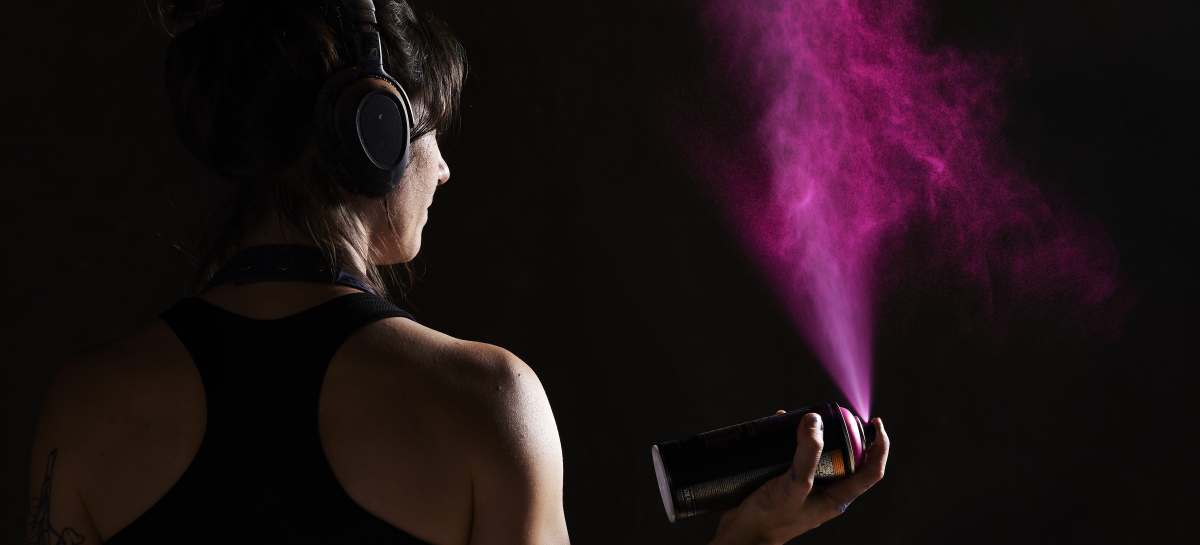Almost five years since Street Prints Ōtautahi, Christchurch’s last significant street art mural festival, Flare Street Art Festival provided a welcome shot in the arm for a city with an established reputation as an urban art destination. The brainchild of ARCC, a urban activation collective of local business people and place makers, Flare burst into life with a roster of seven headline artists painting huge murals and a flurry of additional activities.
Flare was built around the selection of massive new murals that would transform the SALT District and surrounding environs, landmarks that showed an impressive diversity, each artist flexing their unique styles, interests and intentions with creative freedom.
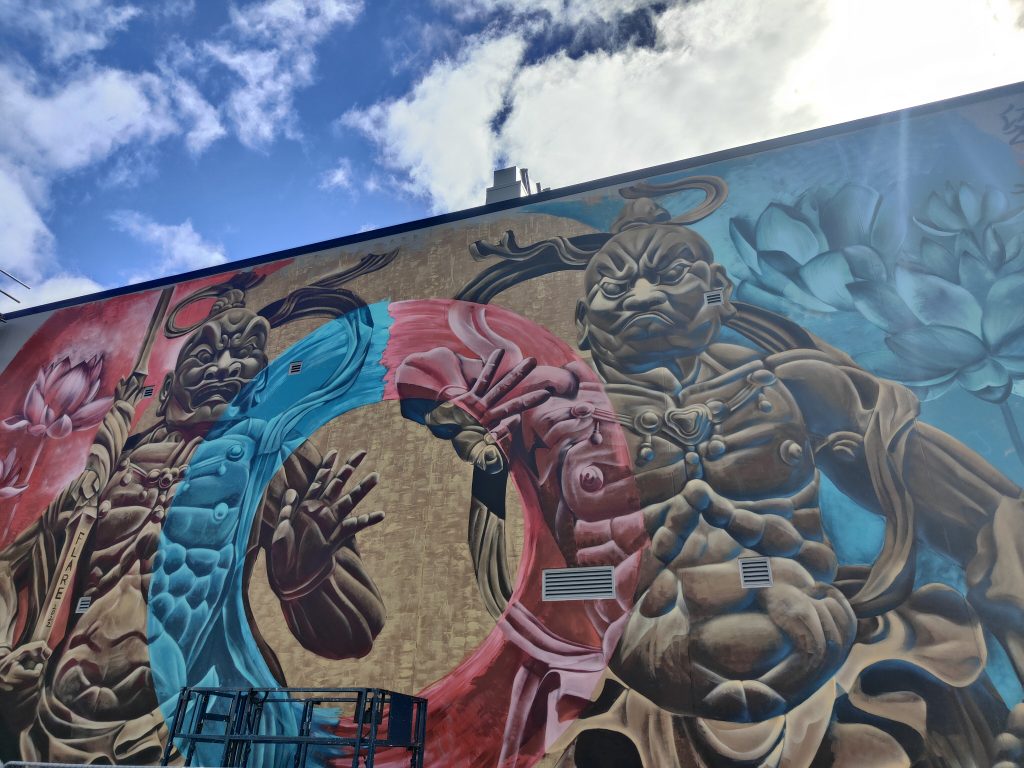
The largest mural, on the side of the newly renovated Cotters Lane building, was completed by Koryu, a Japanese artist who has been based in Aotearoa since the 2020 lockdown, living in Geraldine but travelling across the country to paint murals. While relatively new to urban art, picking up a spray can just three years ago after visiting Melbourne, Koryu’s impressive depiction of fierce Niō warriors, guardian statues of Buddhist temples in Japan shows his quick development. The circular motif in the middle of the image suggesting the infinite quality of existence, the warriors themselves representing the beginning and end of all things (the open and closed mouths symbolic of the in and out breath, the first and last characters of the alphabet). The huge work, over 160 square metres, was a massive undertaking, filled with detailed musculature and gestural painting and aware of the shared experiences of Christchurch earthquakes and the Tohuku earthquake and tsunami in Japan in 2011 when both regions were struck by devastating natural disasters, making this work, a gift of guardians, even more resonant.
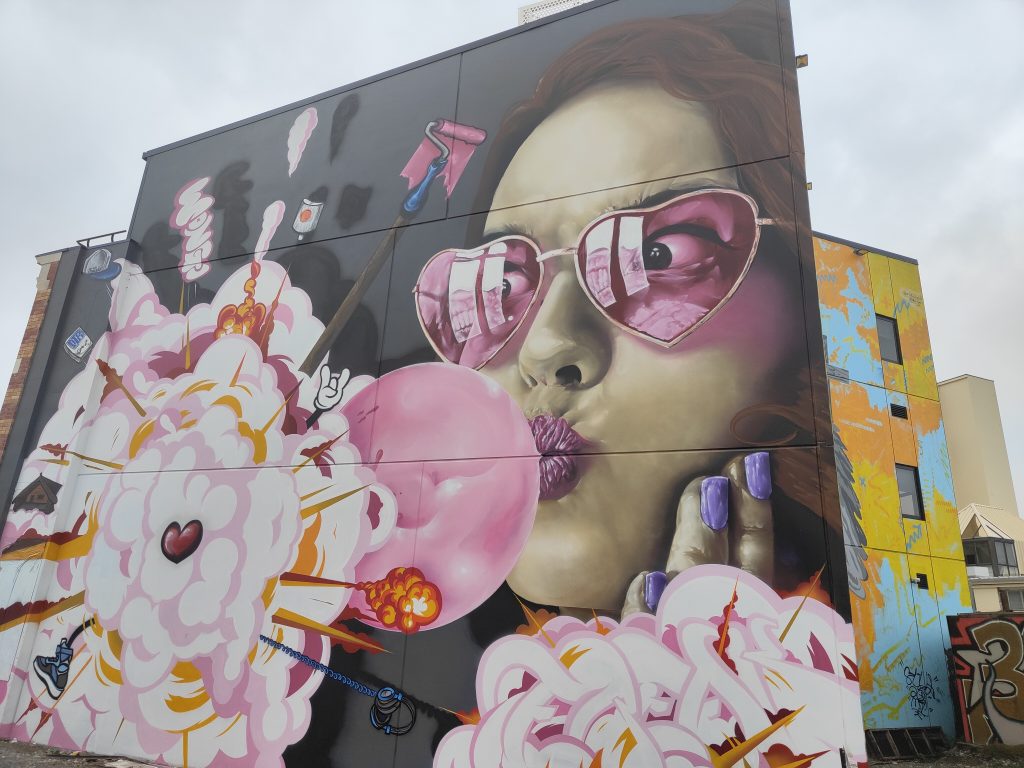
Nearby, overlooking Manchester Street, local artist Wongi ‘Freak’ Wilson displayed his technical skill with a vibrant depiction of a woman wearing rose-tinted glasses and chewing bubble gum. The pink gum exploding into a cloud of pop culture references, a baseball cap, a paint roller, headphones and more bursting out of the cloud. The combination of realism and pop-esque cartoon work a summation of Wongi’s style. The upbeat energy of the work infecting an area that still bares the scars of the city’s ongoing .
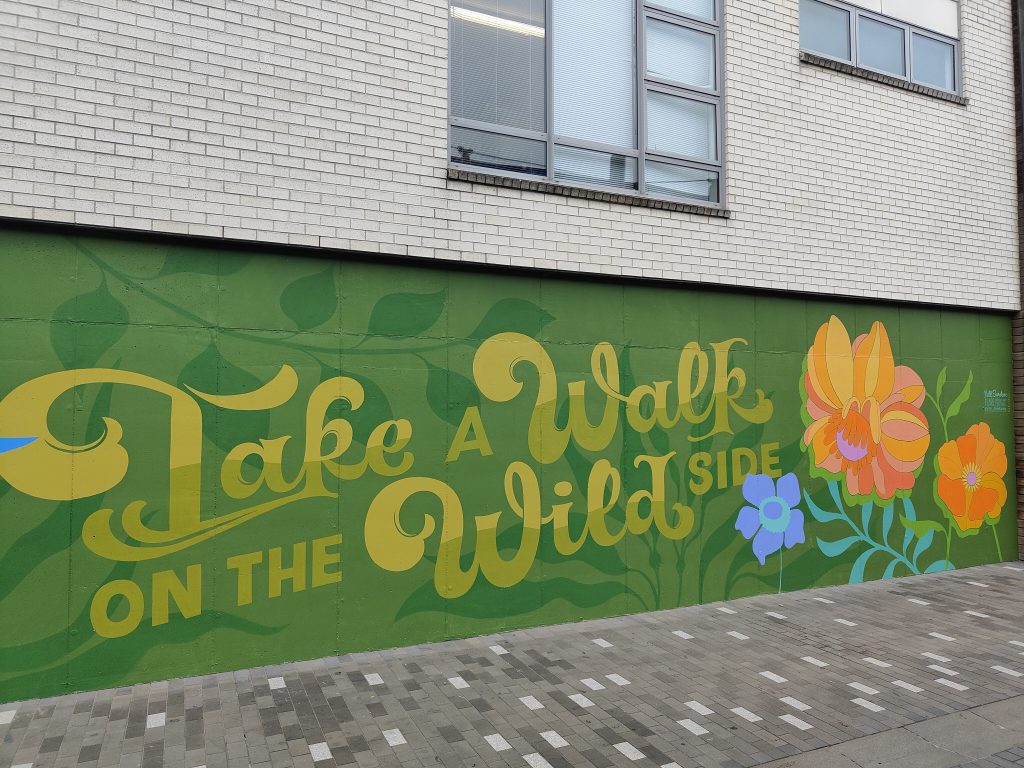
Tucked down Memory Lane, behind the imposing SALT Mural by Paul Walters and Dcypher in Evolution Square, Gisborne artist Kell Sunshine added a rolling, lyrical mural, a beautiful contrast to the architectural and pared-back piece around the corner. Floral forms blooming and unfurling around the phrase ‘Take a walk on the wild side’, Sunshine’s mural reminds us of the need to break from convention and embrace our ‘wild side’ – a literal depiction of nature amidst the urban jungle. The 70s vibe is relaxed and the somewhat secluded placement allows for the viewer to stop and absorb the message before returning to the bustle of the city.
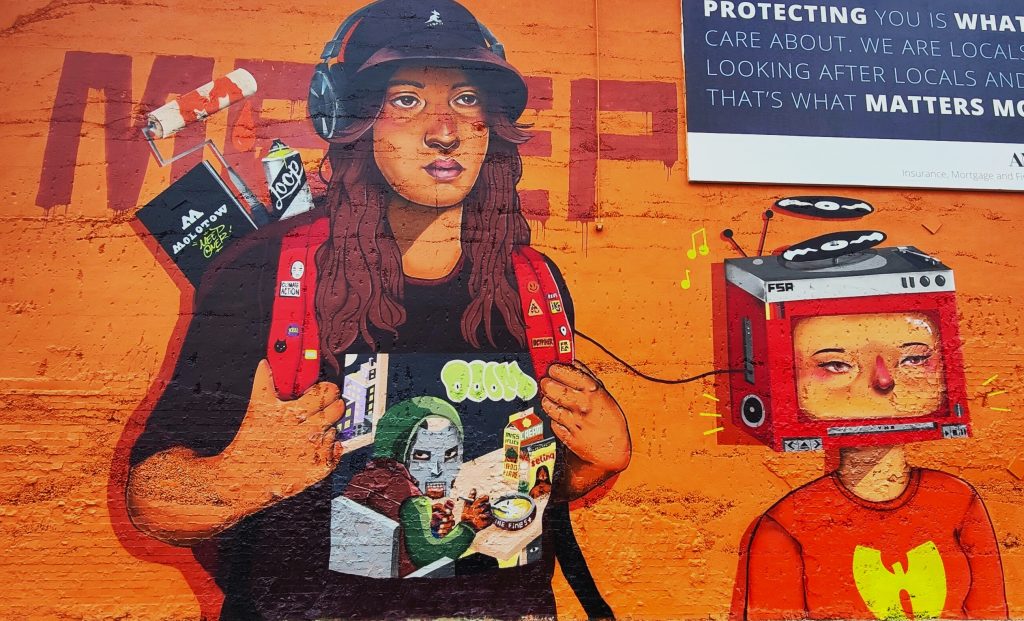
On St Asaph Street, homegrown talent Meep produced the largest work of her career, with a stylised self-portrait against a bright orange backdrop. The massive image shows the artist, with a backpack filled with paint, a roller and a blackbook, walking along the tracks (a traditional graffiti hot-spot and suggested by the large roller piece behind the artist), headphones plugged into a television-headed representation of hip-hop music – her constant companion (the homage to hip-hop cemented with the Kangol bucket hat and the MF Doom and Wu Tang Clan t-shirts). The strong representation of a female graffiti writer illuminating an often marginalised presence in a predominantly male sub-culture.
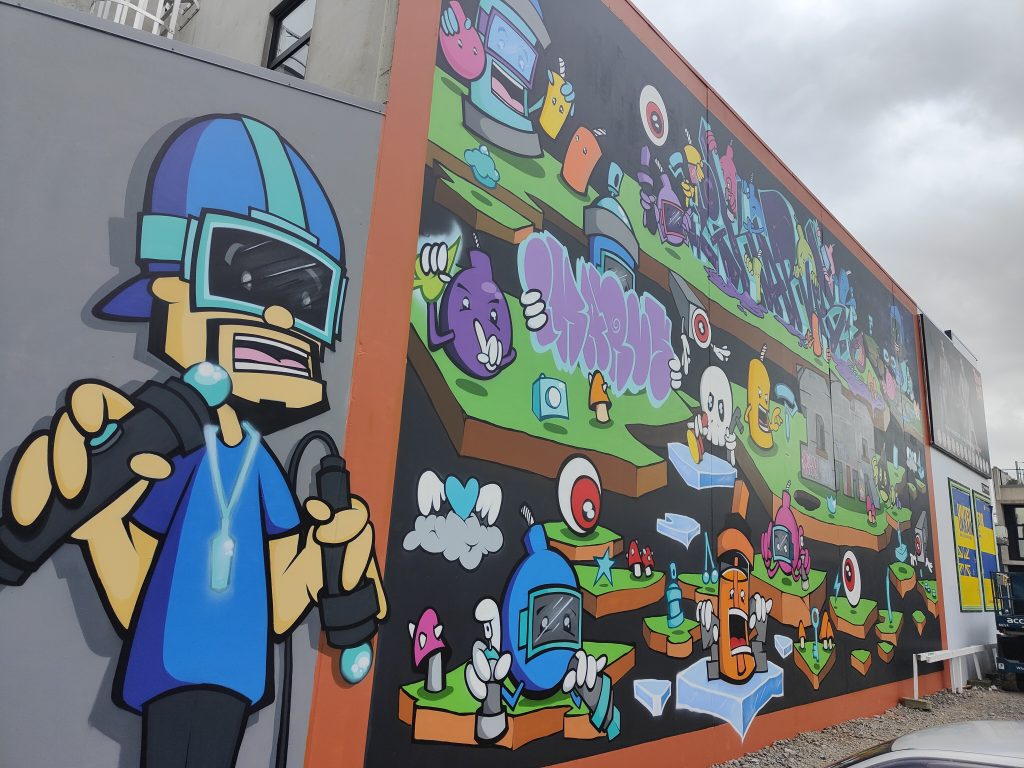
On the corner of Manchester and Welles Street, local legend Ikarus of the DTR Crew recounted his own experiences in graffiti through the lens of an AR video game (a cartoon version of the artist shown in full AR goggle mode in the corner). The levels of the game move through the stages of graffiti, from tags to throw-ups and finally ascending to masterpieces, the obstacles and intricacies thrown in as well. The shout-out to traditional graffiti an important inclusion in a forum where the culture is often excluded in favour of birds and buildings. The shout out to the legendary Jungle acknowledging the legacy of those who have come before and the important role of mentorship through example.
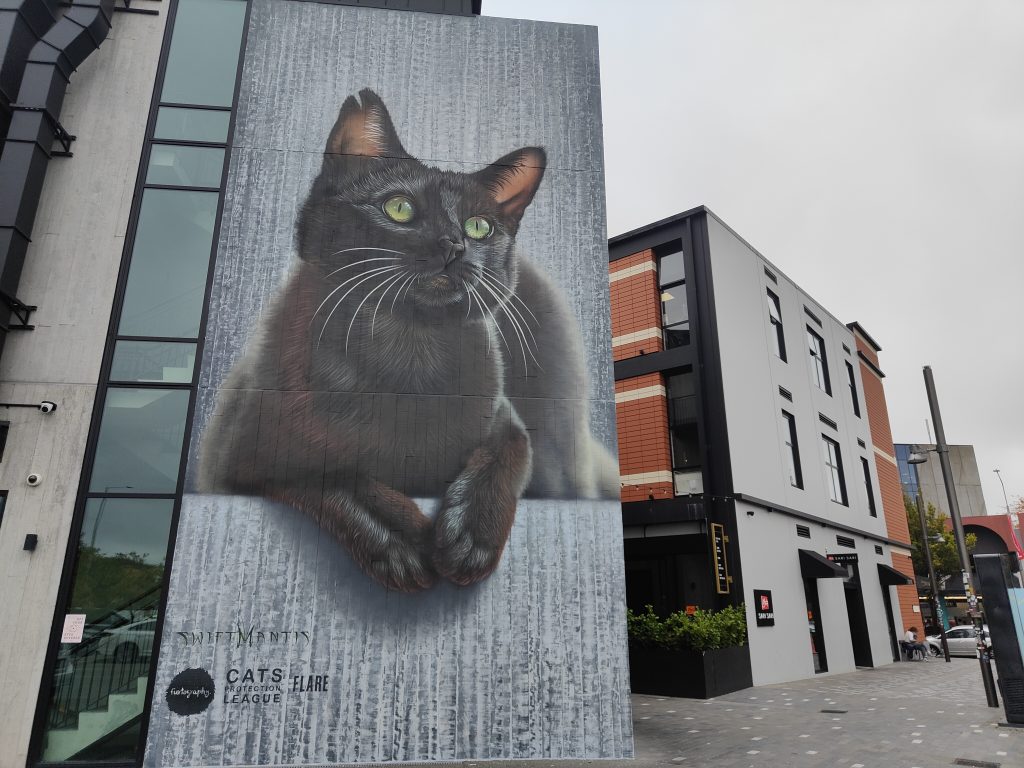
In the rear of the Little High car park on St Asaph Street, Palmerston North artist Swiftmantis continued his series of ‘Stray Stories’ with a huge depiction of black cat Olive, her green eyes surveying the surrounding area. The amazing detail reveals the feline’s character, her tattered ear a sign of her survival. Currently with the Cats Protection League of Christchurch. Olive, perhaps now the city’s most famous cat, is still looking for her forever home, the work serving to highlight her situation and to celebrate the work done by the Protection League. The image has already stopped hundreds in their tracks, wowed at the production and enamoured with the beautiful, majestic animal.
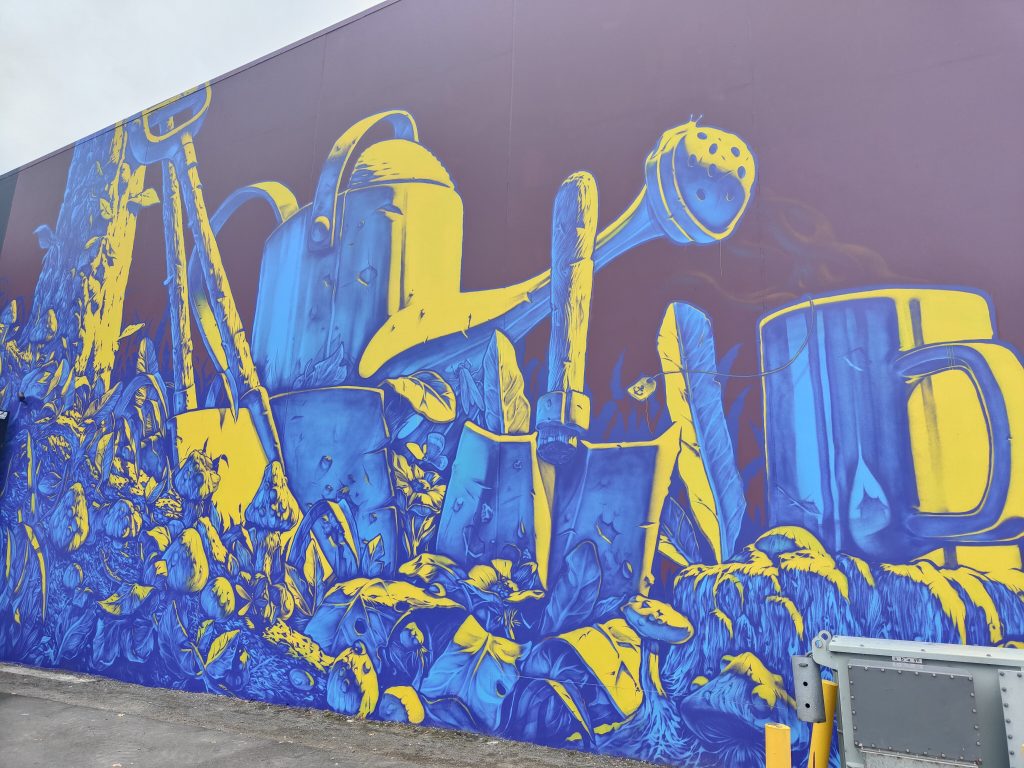
The final work, located on Manchester Street, was delayed when Elliot Francis Stewart was unable to make his way to Ōtautahi until the final (or at least the final official) day of the festival. Renowned as a supremely talented illustrator, Stewart drew inspiration from Christchurch’s ‘Garden City’ moniker to depict a sweetly nostalgic scene of a shovel and bucket in a garden. The electric colour scheme of blue, yellow and magenta highlights the intricate detail, the leaves, bark and even tiny lizards occupying the serene setting. It is a show stopper that draws you in, your eyes led across the incredible detail of the wall.
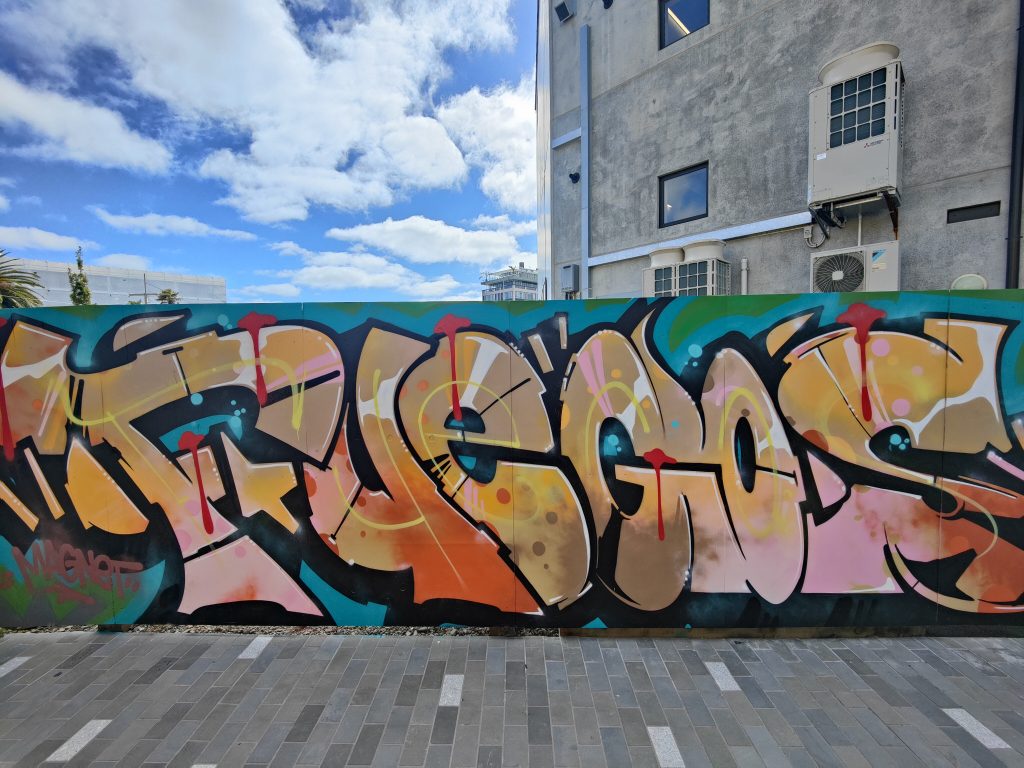
While these murals were the central focus of Flare, there was plenty more going on across the extended two week programme. Just prior to the official launch, Dcypher, Ghostcat and Dr Suits installed an anti-war 3D mural – an oversized Molotow pen fixed to the wall appearing to be the tool used to scrawl over the image of a tank in bright pink – a peace sign and the declaration ‘Make Art Not War’ defacing the symbol of military force. Just around the corner, Flare made use of a High Street shop as a pop-up gallery, featuring local and visiting artists, an array of art and apparel available. The pop-up served as the central hub for the festival, with artists hanging out and passers-by drawn in (our Watch This Space guided tours also departed from the pop-up space, while the Watch This Space Artist Panel was held at 12 Bar on St Asaph Street). An unassuming High Street space hosting a projection work, a collaboration between Fiksate Gallery and the Offline Collective, added a dynamic night-time presence to the festival. The BOXed Quarter’s collection grew with the ‘Wahine Takeover’; Jessie Rawcliffe, Jen-Heads, Berlin and MKA adding fresh paintings to the panels. The final Saturday of the festival saw over two dozen artists take over the lane ways surrounding popular bar Smash Palace with a graffiti jam, artists from different cities and generations lifting the veil from graffiti’s often mysterious presence as visitors could watch the paint being sprayed on the wall. Finally, on the last weekend, Billens Lane, next to Little High, received a make-over with fresh hoardings painted by Jacob Yikes, Dcypher, YSEK, Chile One, Ikarus, Tepid and Bols, adding further diversity to the collection of Flare works.
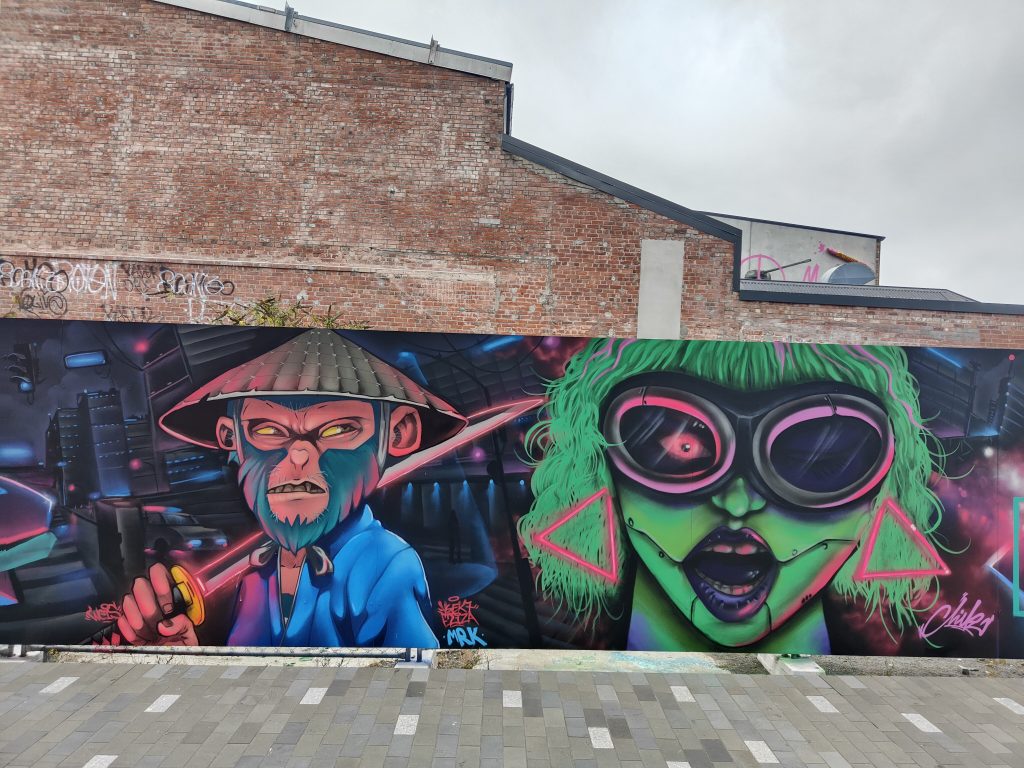
With over 40 new works of art painted across the city, and over 30 artists involved across the festival, Flare served to connect the dots as an event that was for the city and the culture. This is an important element of such an event, recognising the need to support local talent and provide opportunities of varying scales, to raise the profile of urban art and foster the seeds of the city’s creative foundations. Of course, with new incarnations will come new challenges, from finding fresh walls to the massive task of finding money, but Flare has made a promising start, and we are already looking forward to 2023!

